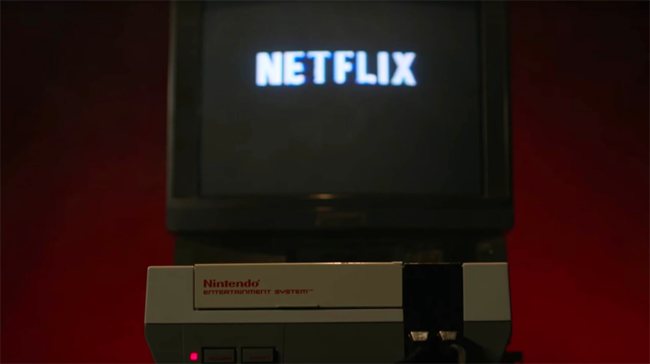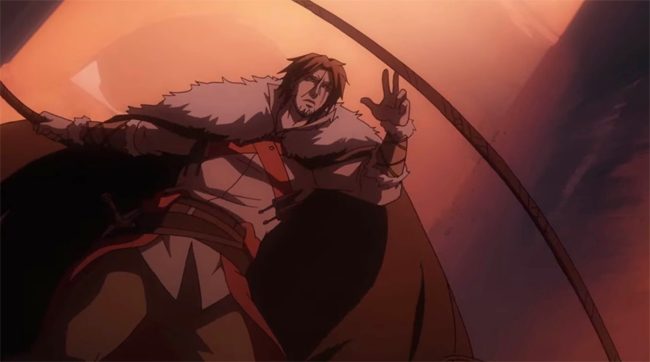
Disclaimer : The following article was written freely based on the author's opinion, and it may not necessarily represent Inven Global's editorial stance.
Video games don’t exactly have the best track record when it comes to being adapted into anything other than video games. Ubisoft tried and failed to make a compelling Assassin’s Creed film in 2016, and Blizzard’s Warcraft franchise suffered a similar fate last summer, with a story that added nothing to the universe and a tone that fumbled between super-serious and goofy. The Halo series fared no better when it opted for a long-form approach – the companion series Halo: Nightfall felt more like an Alien film than anything else, and it largely lacked the charm and set-piece moments of the game. Castlevania, a four-part animated series now streaming on Netflix, probably should have suffered the same fate, but against all odds, it succeeds.
Roughly following the events of the Nintendo Entertainment System’s Castlevania III: Dracula’s Curse, the Netflix series follows legendary vampire lord Dracula in his quest for revenge against the theocratic people of Wallachia. Blinded by anger following an event that left his wife dead and Dracula without any clear purpose in the world, he sets out on a mission to destroy humanity, bringing along gargoyles and an array of ghoulish creatures to slaughter anyone and everyone – this, as the series establishes early on, even includes newborn infants. No one is safe from Dracula’s wrath, and he is established as a nearly invincible malevolent force within the first few minutes of the series. At only about 24 minutes per episode, this early characterization is a bit rushed, and it stands in stark contrast to the slow-burn story of MercurySteam’s first Castlevania: Lords of Shadow game.

After the first episode, the perspective switches to Trevor Belmont, the last member of the vampire-hunting Belmont family who has grown apathetic toward his cause after years of societal resistance. Content to spend his days chugging beer and picking fights with anyone who disparages the Belmont name, he’s a far cry from the super-heroic Simon Belmont seen in the other classic Castlevania games, but over the course of the season, I gradually warmed up to Trevor’s controlled laziness. When tasked with rescuing a missing member of a mage clan that is also fighting Dracula, he does so without hesitation, but only because he knows it will ultimately help defeat the vampire lord.
Though Dracula makes several appearances in the first four episodes of the series – another eight will release in 2018 – he isn’t really the antagonist yet. That role falls to Wallachia’s church and a bishop so blinded by his devotion to a higher power that he can’t comprehend his own actions could have sparked Dracula’s wrath. Hated equally by Dracula and Trevor, the bishop isn’t a particularly original character, but he gives a perfect introduction to the world of Castlevania: one that has worn its Christian influence on its sleeve while never outright declaring any devotion to its principles.

Storytelling in Castlevania, particularly in the earlier games, was never a primary focus, which is perhaps why writer Warren Ellis’ work here is so refreshing. It almost feels like a missing piece to a series that is, in almost all other aspects, complete and cohesive. No longer do we have to wonder why the Belmonts are able to use holy water to destroy monsters, and the series establishes a tense but mutually beneficial relationship between Trevor and Alucard, the vampiric son of Dracula.
The Netflix series’ atmosphere is further enhanced by fantastic old-school animation that looks like it could have been produced in the 1980s. Flames surround a woman as she’s burned at the stake before her skull turns to ash and crumbles away. Skeletons stand impaled in a field. Within city walls, entrails are wrapped around spires, still fresh from the slaughter just hours before. But everything is drawn with a sense of restraint – colors are slightly washed out and movement is stiff in a way that evokes classic Disney films … with plenty of added gore, of course.

And while you won’t be jamming out to synthesizer-laden video game tunes during the series, the music fits the show’s early episodes perfectly. It’s dark and creepy, but without the huge crescendos we’re likely to hear in the following season. One would think this would be an issue, as the Castlevania series is known for non-stop monster-killing action, but it just works. All of the pieces fit together to create a believable world, and it’s one that I’m hoping will last for more than just the twelve planned episodes.
Because the first four episodes of Castlevania don’t really move toward a climax, it’s a great first step into the franchise for those who have never played one of the games. The basic pillars of the series – the Belmonts, Dracula, and religious symbolism – are all here in full force, and it delivers plenty of whip action as Trevor slices a thug’s finger off and effortlessly dodges attacks. It stops just short of actually allowing us to see Trevor and Dracula face off in a duel to the death, but for those who can’t wait until next year to see the series’ conclusion, now is the perfect time to try out the Castlevania video games. Light on in-game narrative, the original NES trilogy will only be bolstered by the increased context provided in the show, much like knowledge of a book can improve your experience watching its film adaptation.
I don’t believe the Castlevania show’s success can be replicated with many other game series, particularly those that have already established substantial backstory and canon through games alone. Assassin’s Creed is apparently next in line, but there are very few gaps in time that need to be filled in at this point: Modern game series simply do a lot more “telling” than “showing.” Another Konami classic, Contra, could be a great fit because of its super-light narrative, but for now, it’s enough to just enjoy Castlevania for the surprise gem that it is. Even if you have no interest in the games, it would be a shame to let it pass you by.

Sort by:
Comments :0






